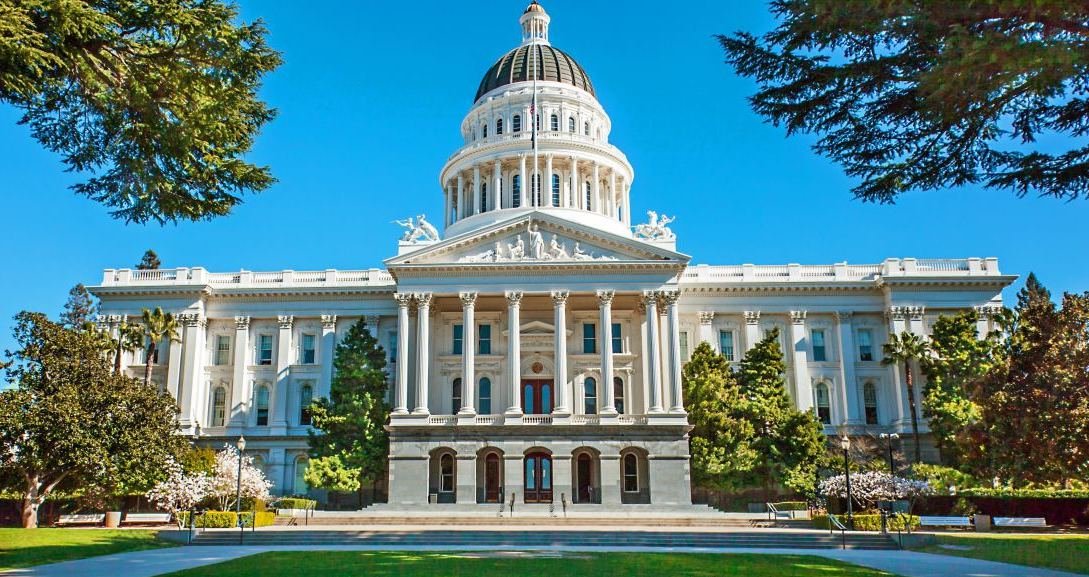Sacramento Bee: Open the California Capitol ASAP, Bipartisan Group of Lawmakers Tells Newsom
A bipartisan group of California lawmakers is urging the Legislature’s leadership to open the Capitol for greater public access by May 19 in accordance with COVID-19 health and safety guidelines. The coalition of five Democrats, four Republicans and one independent wrote in a letter to Senate President Pro Tem Toni Atkins, D-San Diego, Assembly Speaker Anthony Rendon, D-Lakewood, and Gov. Gavin Newsom that California’s low coronavirus positivity and hospitalization rates and strong vaccination campaign have made it possible to safely reopen the building to more people. They pointed to businesses beginning to operate more traditionally as evidence of the “terrific progress” California has made in recent months toward defeating the virus and being able to return to a “semblance of pre-pandemic normalcy.”
“A notable — and increasingly troubling — exception is our State Capitol,” the legislators wrote.
“Access to the Capitol Building remains limited well beneath other public spaces.” Sacramento County is currently in the red tier on the state’s color-coded blueprint that details which businesses are allowed to open and at what capacity. Certain businesses remain closed, like bars that don’t serve food and convention centers. Others, like restaurants, retail stores, movie theaters and churches can operate at a reduced capacity.
The letter outlines three specific requests: remove barricades that surround the Capitol and Capitol Park; reopen the building and hearing rooms at appropriate levels; and publish access to reopening guidelines ahead of the June 15 date Newsom set as his goal to “fully reopen” California’s economy. Barricades, which are under control by California Highway Patrol, have been in place for the past year following racial justice protests and other events led by critics of Newsom’s coronavirus emergency orders. “This is the people’s house and we are elected representatives here to do the people’s work,” they argued. “Ensuring access to our proceedings is a vital part of our democracy — in ways that are both practical and symbolic. With that in mind, we urge you to act now to restore access to the people’s house for the people of California.” The group includes Democratic Sens. Steven Bradford, Melissa Hurtado and Josh Newman, Democratic Assembly members Cottie Petrie-Norris and Adam Gray, and Republican Assembly members Jordan Cunningham, James Gallagher, Tom Lackey and Suzette Martinez Valladares. Assemblyman Chad Mayes, the only Independent in the Legislature, also signed on to the letter. “The Assembly is awaiting guidance from the Governor’s Office, California Department of Public Health, Centers for Disease Control and Prevention and CalOSHA that will help us develop our reopening plan,” Rendon said in a statement in response to questions about the letter. “In the meantime, the California State Capitol remains open to the public and members of the media for floor session and committee hearings.”
In a separate statement, Atkins said it was important to “set the record straight” and rejected any claim that the public has been denied access to “participate in the democratic process.” “The measures we’ve taken have never been at the cost of inhibiting public access – quite the contrary, Atkins wrote. “Given the public health concerns of COVID, we enacted a system for people who could not or did not want to physically attend hearings to call in with their participation – thereby increasing public access. During this pandemic, the Senate has ensured that the health and safety of the public, members, and staff were at the forefront of our efforts, and we will continue to do what is the best interest of everyone’s safety as we enter this next phase of the state’s reopening.” Assembly and Senate leadership has also indicated in recent weeks that the building is preparing to reopen to more people in the coming weeks. Late last month, the Assembly and Senate Rules Committees urged employees to submit their COVID-19 vaccination status, and more staff members are being allowed into the building to assist with an increased workload ahead of budgetary and legislative deadlines. The building has largely been shuttered to the public since the COVID-19 crisis began in March 2020. Halls traditionally packed with reporters, school kids on field trips, staffers and lobbyists have instead remained largely empty.

